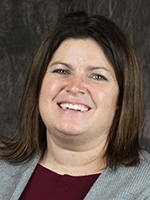
7 Ways to Save Money on Calf Starter – Ann Hoskins, Vita Plus
 By Ann Hoskins, Vita Plus calf products manager
By Ann Hoskins, Vita Plus calf products managerThe best way to save on calf starter without sacrificing growth and performance is to limit waste. These seven steps can help you save money on calf starter.
1. Feed to intakes.
Feed just slightly more than what the calf will eat. Calves are often overfed and, when we don’t throw out feed, starter gets old – or possibly moldy – before it is changed.
Young calves like to eat from an almost-empty pail. To accommodate this behavior, feed only the amount they can eat in a 24-hour period. Start calves on grain by day three with a handful of calf starter and increase the amount as intakes increase.
2. Set pre-weaned buckets at the right height.
The optimum bucket height depends on the size of the calf and pail type. Measure the distance from the bottom of the pail to the ground and add that number to the height of the pail itself to get the total bucket height. Eating behavior indicates 24 to 27 inches is a good range for young calves. For example, if your pail is 10 inches deep and the bottom of the pail is 14 inches from the ground, the total height is 24 inches, which is within the general comfort range for good consumption.
Many of today’s calf panels have adjustable fronts. Take advantage of this feature to allow calves to eat comfortably. You can also use a shallow pail to raise the height and allow for easier eating. You will need to adjust to allow for more grain as intakes increase.
3. Adjust pail position.
Make sure the pail is either straight in a pail holder or slightly tilted toward the calf. Pail holders take quite a bit of daily abuse from calves and equipment. When holders start to lean in any direction, calves push a lot of grain out of the pails and onto the ground. Leaning holders also make it easier for calves to pull out pails and spill their grain.
4. Accommodate transition.
When calves transition to group pens, make sure the bunk size is appropriate for the animals’ size and that they can easily reach their starter. Many troughs are too narrow and calves cannot comfortably move around feed in the trough. They often dig and beat up the grain, creating more fines or spilling from the feedbunk. Transition calves seem to do well with 18-inch-wide bunks. An 18-inch drain tile, cut in half, that has a smooth inside works very well. It should be raised slightly; I recommend a 4- to 6-inch offset between the floor where calves are standing and the feed floor. Whatever you choose for a bunk, make sure it is easy to clean and calves can reach the feed at all times.
5. Plan for weather.
If the forecast calls for rain or snow, feed accordingly. You don’t want young calves to run out of feed, but they are not going to stand in the rain or snow to eat. If you know rain is coming, simply cover the grain pail with the water pail until the shower passes. If the grain gets wet, you need to change it. Calves will not eat wet grain, and new grain placed on top will mold like the grain below it.
6. Change feed routinely.
Grain should be changed out two to three times per week in dry weather. This removes fines, keeps grain fresh and keeps calves interested in eating. If pails have any buildup, they should be replaced with clean pails. Having clean pails easily available makes this chore more efficient. If the grain is clean, dry and free of mold, you can collect it and feed it to other animals, such as older transition calves.
7. Tidy up your storage.
Grain should be stored in a clean, dry place or a bulk bin. Sweep and clean these areas, and ensure easy access and use. Be conscious of rodent control in these areas. Little rodents love to eat calf feeds and will tear through bags to get it. They will also gather near bulk bins if starter is spilled or left over in that area. Don’t waste money on starter by feeding other critters.
Take a good look at starter storage and feeding areas, and look for other causes of waste. These are often easy fixes and can result in big savings for the operation.
This article was originally written for Progressive Dairyman’s PD Extra. Click here for the original article.
| Category: |
Business and economics Calf and heifer nutrition Starting Strong - Calf Care |

